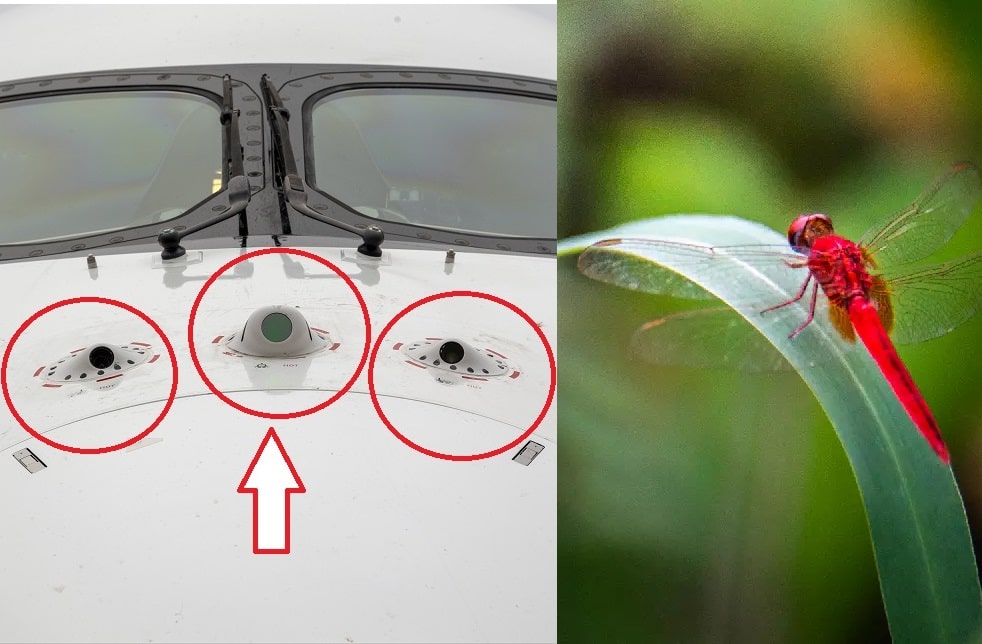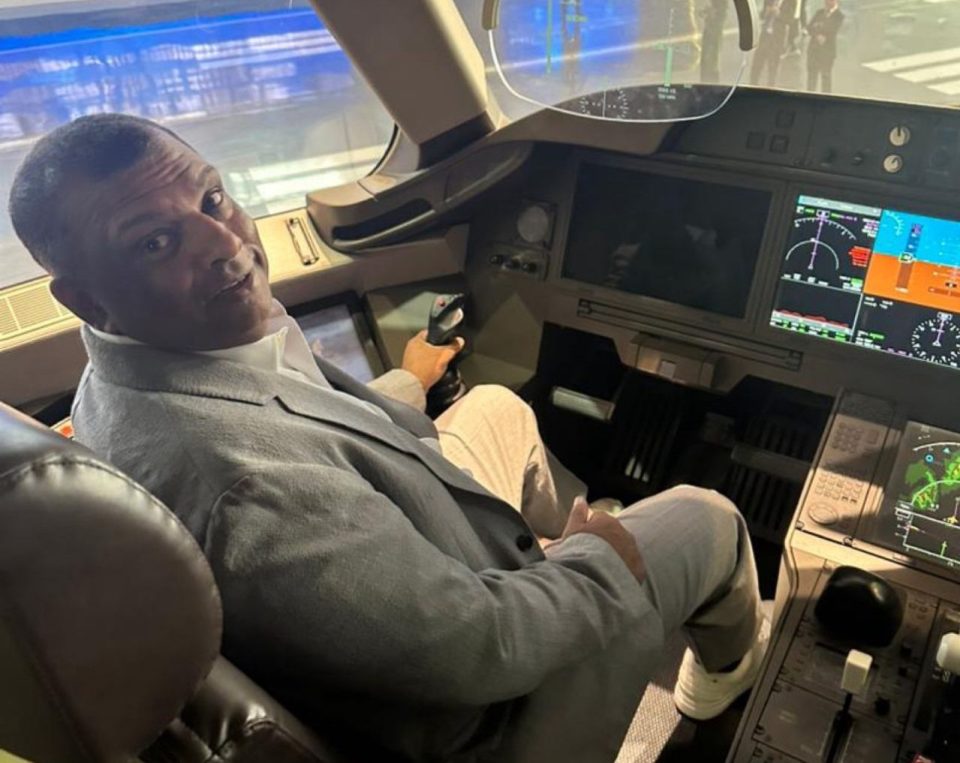Aerospace
How Pilots are Benefiting from Dragon Fly, The intriguing new Airbus innovation

Toulouse, 12 January 2023 – A350-1000 test aircraft being used by Airbus UpNext, a fully owned subsidiary of Airbus, to test out new on- and in-flight pilot aid systems.
The technologies being demonstrated, collectively referred to as DragonFly, include automated emergency diversion in cruise, automatic landing, and taxi assistance. They are intended to assess the viability and relevance of further research into autonomous flight systems in support of safer and more effective operations.
The technologies were able to help pilots throughout the flight test campaign when landing and taxiing, managing a fictitious disabled crew member event, and in flight. The aircraft was able to produce a new flight trajectory plan and interact with both Air Traffic Control (ATC) and the airline operations control center while taking into consideration external factors like flight zones, topography, and weather conditions.
So how does it work?
DragonFly could be a game-changer when it comes to derisking emergency operations. Its focus is on three key areas, each one drawing on a combination of data captured during flight and a vast corpus of flight information to promote automated yet intelligent decision-making.
DragonFly offers a solution to help ensure safe flight and landing. If the crew is unable to control the aircraft, the onboard function detects the issue and automatically selects the most suitable airport to redirect the aircraft towards.
But of course, flight paths and external factors are complex and changing. A dragonfly scans its surroundings and adapts its journey accordingly. Our DragonFly demonstrator does much the same thing, taking into account external factors such as flight zones, terrain, and weather conditions as it chooses where to land. But unlike a regular dragonfly, our DragonFly also benefits from a constant channel of communication between the aircraft and both Air Traffic Control and the Operations Control Centre of the airline to ensure a safe and coordinated approach.
What if a humble dragonfly could help us improve our aircraft? ? Discover how the new #AirbusUpNext DragonFly demonstrator takes inspiration from this extraordinary insect to improve safety and efficiency during flight.
? https://t.co/5wCsTDBG9Y pic.twitter.com/LpihLu3Sqc— Airbus (@Airbus) January 12, 2023
Safe, automated landing at any airport in the world
A dragonfly’s vision works far more quickly than a human’s, which is why we have designed a system that combines sensors, computer vision algorithms, and robust guidance calculations to make a landing in low visibility or difficult weather conditions much easier.
These innovations pave the way for automated landing (if necessary), or can be customized according to the pilot’s flying skills to relieve them of additional processes in the event of an emergency or critical situation.
In time, DragonFly’s innovations could allow the aircraft to land at any airport in the world regardless of whether it is equipped with existing ground equipment technology currently used for automatic landing.
Airbus UpNext has also explored features for taxi assistance, which were tested in real-time conditions at Toulouse-Blagnac Airport. The technology provides the crew with audio alerts in reaction to obstacles, assisted speed control, and guidance to the runway using a dedicated airport map.
These 3 cameras allow our #A350 test aircraft to “see” ? and safely manoeuvre within its surroundings by reviewing and identifying features in the landscape… just like a dragonfly! Learn more: https://t.co/5wCsTDB8kq pic.twitter.com/MiEaCIgjbS
— Airbus (@Airbus) January 12, 2023
In addition to these capabilities, Airbus UpNext is launching a project to prepare the next generation of computer vision-based algorithms to advance landing and taxi assistance.
These tests were made possible through cooperation with Airbus subsidiaries and external partners including Cobham, Collins Aerospace, Honeywell, Onera, and Thales. DragonFly was partially funded by the French Civil Aviation Authority (DGAC) as part of the French Stimulus plan, which is part of the European Plan, Next Generation EU, and the France 2030 plan.

Aerospace
India is set to build a central command for the Air Traffic Control system, called ISHAN

India’s air traffic growth has led to increased responsibilities for air traffic control. The Airports Authority of India (AAI) is considering centralizing air traffic control for aircraft, dividing the country into four regions. The goal is to consolidate India’s segmented airspace into a single entity to improve air traffic management (ATM) efficiency, safety, and smoothness.
Recently, the AAI invited expressions of interest to develop a detailed project report for the Indian Single Sky Harmonized Air Traffic Management (ISHAN) initiative in Nagpur. Under this plan, air traffic controllers in Nagpur would handle domestic flights flying above 25,000 feet, eliminating the need for coordination among controllers in different regions.
For domestic regional flights operating above 25,000 feet, control would shift to the central command in Nagpur. This consolidation aims to enhance airline operations, increase flight handling capacity, and reduce congestion and flight times for passengers.
Currently, the AAI provides ATM services over Indian airspace and adjoining oceanic areas, covering over 2.8 million square nautical miles. This airspace is divided into four flight information regions (FIRs) in Delhi, Mumbai, Kolkata, and Chennai, along with a sub-FIR in Guwahati.
FIRs are responsible for providing air traffic services, including weather information, visibility, and search and rescue assistance. The proposed unification under the ISHAN initiative aligns with the projected growth of the aviation industry, which anticipates a doubling of domestic passenger traffic by 2030.
Aerospace
Does AirAsia show interest in Comac aircraft in the future?

Tony Fernandes, CEO of Capital A, operating as AirAsia Group, recently paid a visit to the facilities of COMAC on April 2, 2024, and was thoroughly impressed by what he witnessed.
C919 already securing nearly 1000 orders
COMAC, known for its homegrown aircraft, has launched two promising jets: the ARJ21 and the C919 aircraft. Both aircraft are gaining popularity in the Chinese market, with the C919 already securing nearly 1000 orders from various airlines.
Fernandes expressed his admiration for COMAC’s achievements in aircraft manufacturing, acknowledging the immense challenge it entails. His visit underscored the realization that AirAsia now has a viable third option when it comes to selecting aircraft for its fleet.
During his tour, Fernandes was delighted by the innovation and technology evident in COMAC’s aircraft production and the company’s commitment to long-term partnerships.
He noted that many Western companies have shifted away from prioritizing loyalty and customer service, opting instead for short-term gains and a narrow definition of success.
Last month, COMAC embarked on an international tour, showcasing demonstration flights to neighboring countries, particularly Indonesia and Malaysia. Fernandes believes that the positive impression left by COMAC during his visit opens up new opportunities for collaboration.
Fernandes emphasized COMAC’s remarkable achievements
The shared values of loyalty, customer service, and long-term vision align closely with AirAsia’s ethos, making collaboration with COMAC appealing. With a focus on innovation and excellence, both companies stand to benefit from a partnership grounded in trust and a shared commitment to success.
Indonesia and China have already collaborated in validating and maintaining the airworthiness of the ARJ21 aircraft, indicating a solid foundation for future partnerships.
In his statement, Fernandes emphasized COMAC’s remarkable achievements and genuine desire for long-term partnership, highlighting the absence of ego and a genuine willingness to succeed together. He marveled at COMAC’s fully automated, AI-driven factory, a testament to their dedication to innovation and efficiency.
Fernandes criticized Western firms for prioritizing short-term gains over loyalty, customer service, and long-term strategy, emphasizing the importance of understanding customers’ needs and collaborating to achieve success.
Aerospace
Indigo will soon launch Air Taxi Service in India

InterGlobe Enterprises, the parent brand of IndiGo, is set to revolutionize travel in India with its upcoming air taxi service.
Scheduled for a potential launch in 2026, this innovative venture promises a seamless journey for passengers between two bustling hubs. Delhi and Gurgaon in Haryana. The forthcoming service is projected to revolutionize the daily commute, offering passengers a swift aerial journey covering the distance in a mere 7 minutes.
This remarkable efficiency contrasts starkly with the conventional 90-minute drive, underscoring the immense time-saving potential for commuters. The anticipated fare, ranging from Rs 2,000-3,000, makes this innovative mode of transport not only swift but also remarkably competitive in pricing.
At the heart of this ambitious endeavor lies a strategic partnership with Archer Aviation, a pioneer in electric vertical takeoff and landing (eVTOL) aircraft technology. Under this collaboration, Archer will supply 200 state-of-the-art eVTOL aircraft, representing an investment of US$ 1 billion. These cutting-edge aircraft, capable of accommodating up to four passengers alongside the pilot, epitomize the future of sustainable air travel.
Powered by six battery packs, Archer’s eVTOL aircraft boast rapid charging capabilities, enabling a swift turnaround between flights. With a charging time of just 30-40 minutes, these eco-friendly aircraft ensure minimal downtime, maximizing operational efficiency.
Similar services are anticipated to be introduced by the joint venture in Bengaluru and Mumbai as well. Nevertheless, the service rollout period has not yet been made public by the company. Next year, it is anticipated to get its certification. Following this, the company will start the certification procedure with the Directorate General of Civil Aviation (DGCA).























